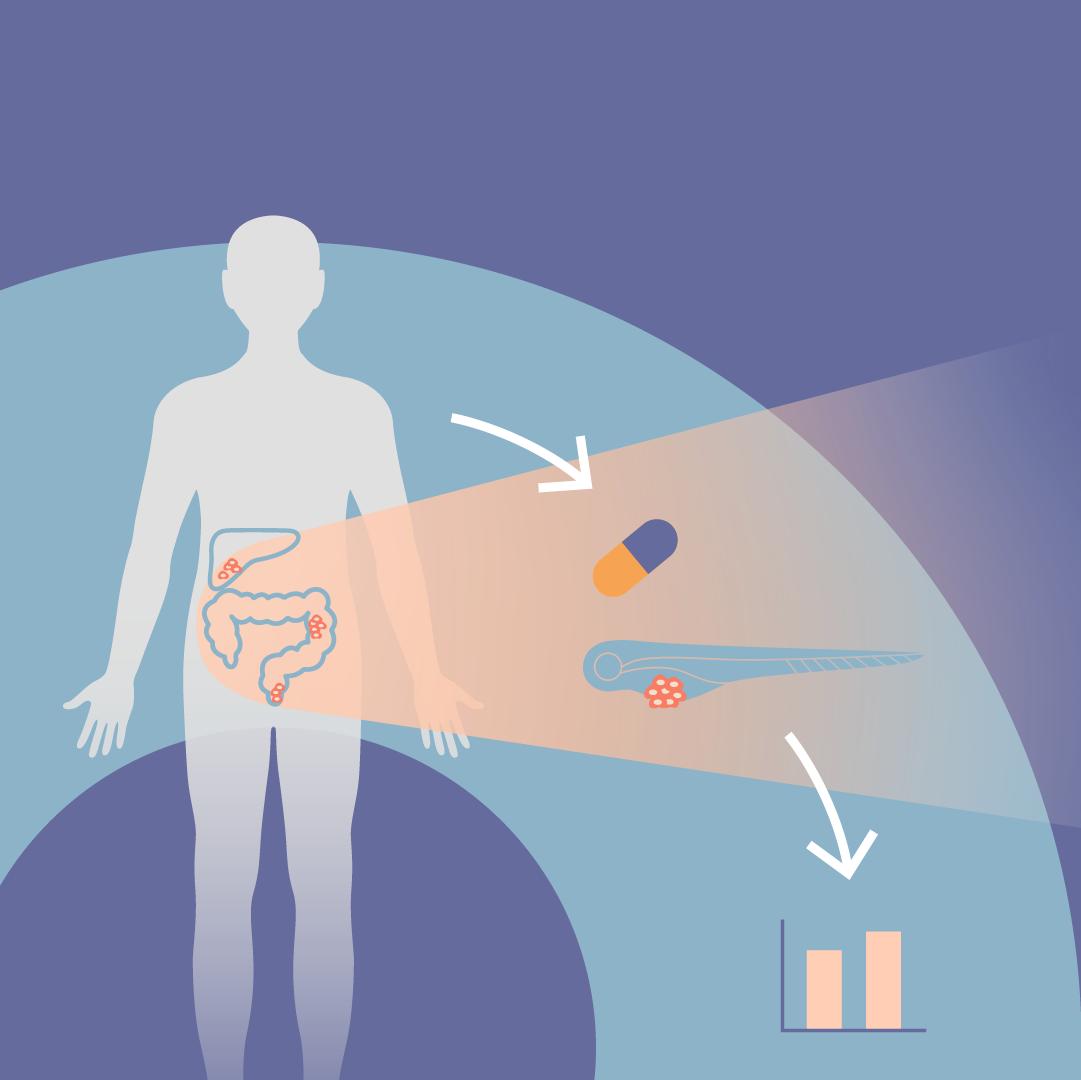Rita Fior, leader of the Cancer Development and Innate Immune Evasion Group at the Champalimaud Foundation (CF), has been studying for several years the power of zebrafish “avatars”, or zAvatars, of cancer patients to help guide therapeutic decisions. The goal: to predict individual cancer treatment outcomes, thus enabling the selection of the best available chemotherapy treatment for each patient.
The idea behind zAvatars is fairly straightforward and consists in taking each patient’s tumour cells and injecting them in zebrafish embryos, effectively transforming these embryos into “Avatars” of that specific cancer patient. Then the various treatment options available for that patient can be applied to the zAvatars, in order to choose the best one. This approach has the advantage of giving fast results – in a matter of days rather than months or several weeks – than the traditional mouse model or even in tumour organoids.
In 2017, Fior and a multidisciplinary team of colleagues from CF and other institutions performed a proof-of-concept study where they showed that the zAvatar method was indeed a feasible and promising model (http://magazine.ar.fchampalimaud.org/zebrafish-larvae-could-be-used-as-…).
Now, in a substantially larger clinical study of 55 colorectal cancer (CRC) patients from the Champalimaud Clinical Centre and the Fernando Fonseca Hospital, published on the 5th of June in the journal Nature Communications, Fior’s team and colleagues developed what they call a “zAvatar-test”. And they conclude that the test is 91% accurate at predicting the response of a patient to a given chemotherapy.
Best treatment choice urgently needed
CRC patients are usually given chemotherapy to control tumour metastasis or, after the initial tumour surgery, to reduce the chances of relapse. But, as the authors write in their new study, currently “cancer patients often undergo rounds of trial-and-error to find the most effective treatment, because there is no test in the clinical practice for predicting therapy response.” That’s when the zAvatars come into the scene.
To create the avatars, the researchers inject tumoural cells taken from patients directly into the zebrafish embryos, generating the zAvatars. They then test the different chemotherapies on those tumours and compare the response in the zAvatars with the actual response of the corresponding patient to the same chemotherapy. This has now allowed them to successfully predict the clinical outcomes of 50 out of the 55 patients.
The team’s statistical analysis showed that three variables are the most important factors for predicting patient response to treatment based on zAvatars. These are the patient tumour stage, and the increase in cell death (“apoptosis fold change”) and metastatic potential of the tumour in the zAvatars.
“By individually comparing the clinical responses of 55 patients with the zAvatar-test, we developed a decision tree model integrating these tree variables", says Bruna Costa, first author of the paper. The result: the test predicted patient outcomes 91% of the time.
This means that the accuracy of the zAvatar-test substantially improves when, apart from just taking into account the response to the treatment, the model incorporated the biological characteristics of the tumour cells, such as the potential to form micrometastases, the researchers note.
Importantly, patient progression-free survival was “significantly longer in patients whose zAvatar-test was sensitive to treatment, in comparison to patients whose zAvatar-test was resistant”, they also observe.
“This shows that ‘giving the right treatment to the right patient’ has the potential to really change patient prognosis. And this is our goal: to have a test to help guide and optimize clinical decisions in a truly personalised manner”, says Rita Fior.
“Altogether, our results show that the zAvatar-test, with a timeframe of 10 days, has an outstanding predictive value for personalised medicine”, conclude the researchers in their paper.
The team is already preparing the next crucial step to bring the zAvatar-test into clinical practice, which is to perform a randomized clinical trial to show the clinical benefit of using the zAvatar-test. In this trial, they will be comparing zAvatar-based therapeutic decisions with the physician’s choice, which is currently the standard of care.
Original Paper here.
Text by Ana Gerschenfeld, Health & Science Writer of the Champalimaud Foundation

Image caption: Patient tumour cells, shown in magenta, injected into zebrafish, with blood vessels labeled in green
Credit: Bruna Costa


